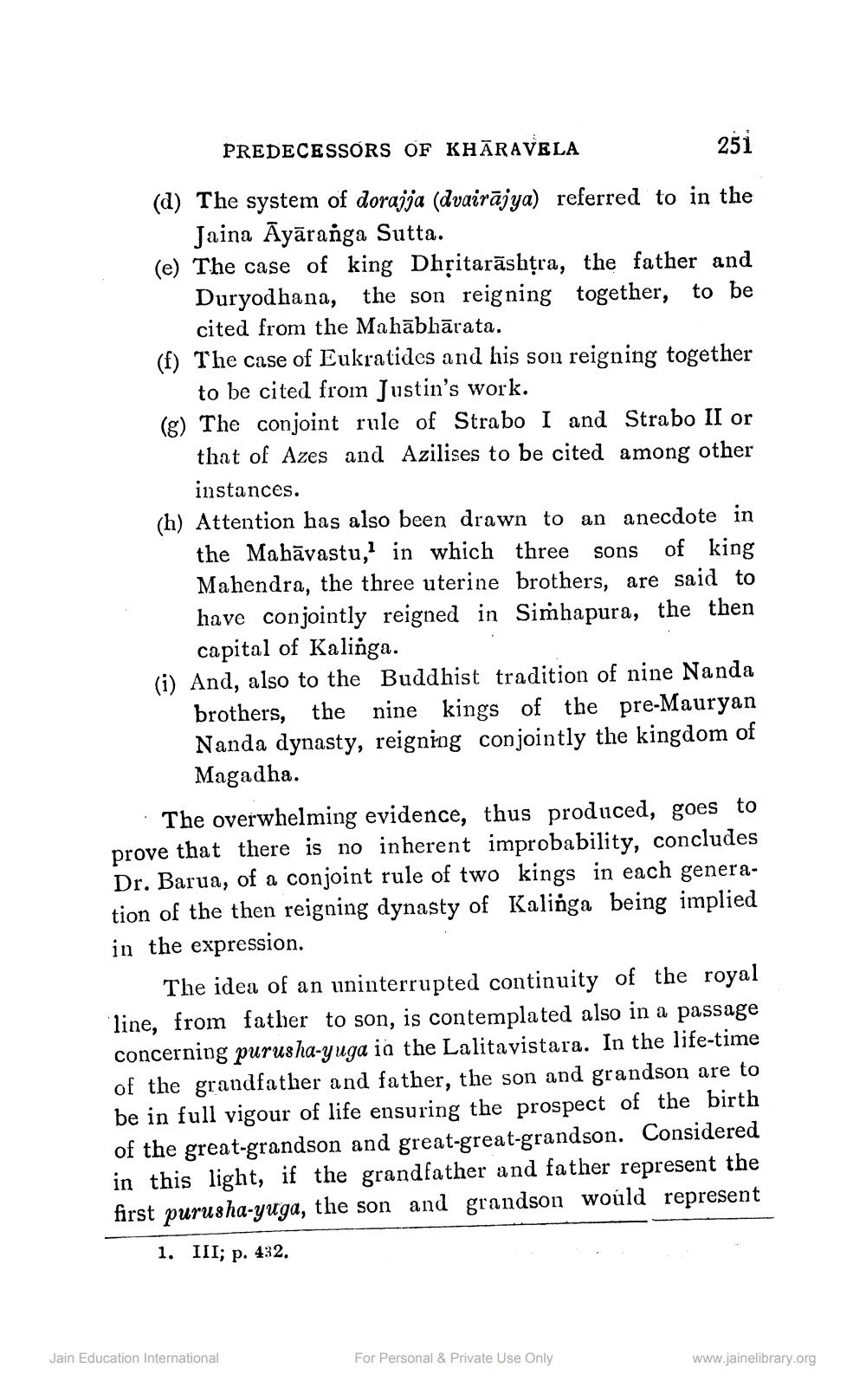________________
PREDECESSORS OF KHĀRAVELA
25i (d) The system of dorajja (dvairājya) referred to in the
Jaina Āyāranga Sutta. (e) The case of king Dhritarāshtra, the father and
Duryodhana, the son reigning together, to be
cited from the Mahābhārata. (f) The case of Eukratides and his son reigning together
to be cited from Justin's work. (g) The conjoint rule of Strabo I and Strabo II or
that of Azes and Azilises to be cited among other
instances. (h) Attention has also been drawn to an anecdote in
the Mabāvastu, in which three sons of king Mahendra, the three uterine brothers, are said to have conjointly reigned in Simhapura, the then
capital of Kalinga. (i) And, also to the Buddhist tradition of nine Nanda
brothers, the nine kings of the pre-Mauryan Nanda dynasty, reigning conjointly the kingdom of
Magadha. · The overwhelming evidence, thus produced, goes to prove that there is no inherent improbability, concludes Dr. Barua, of a conjoint rule of two kings in each generation of the then reigning dynasty of Kalinga being implied in the expression.
The idea of an uninterrupted continuity of the royal line, from father to son, is contemplated also in a passage concerning purusha-yuga in the Lalitavistara. In the life-time of the grandfather and father, the son and grandson are to be in full vigour of life ensuring the prospect of the birth of the great-grandson and great-great-grandson. Considered in this light, if the grandfather and father represent the first purusha-yuga, the son and grandson would represent
1. III; p. 432.
Jain Education International
For Personal & Private Use Only
www.jainelibrary.org




